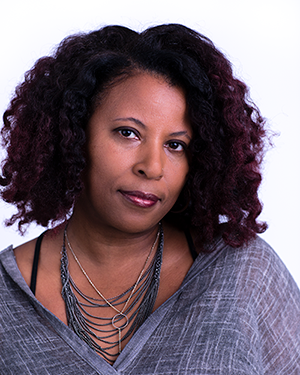What is a “game”? What does it mean to “play” one? As the player, do your choices have real consequences, or is that an illusion?

She defines that term as “a set of approaches to thinking about what different computational and technological methods can do for helping us develop new questions from humanities.”
“There’s also another side of it,” she notes, “which is taking what we think of as humanistic concerns and applying them to technology.”
Students in her course used a program called Twine to create interactive web-based texts. They built videogame controllers and considered how different designs allow or deny access for players with limited mobility in their hands, for example.
They discussed each step as Parham played, on the projector screen in Cole Assembly Room, provocative games such as Blackbar, in which the player guesses the words that an oppressive government has redacted from a series of messages between friends, and Killbox, in which one can play as either perpetrator or victim of a drone strike.
The course presents a number of pedagogical challenges, in part because it’s so popular: more than 100 students enrolled last semester, necessitating seven teaching assistants. Then there are the complexities inherent in, and intentionally addressed by, the digital humanities themselves. “Any kind of field that’s working with technology has to think very squarely about diversity and inclusion,” says Parham—from “the level of access, like physical access, all the way up to economic access. A lot of the stuff we work with is expensive. We figure out how to scale it way back so that the technologies are more affordable.”
Her office in Johnson Chapel is home, for instance, to a pricey Oculus Rift virtual reality system, but also to VR goggles cobbled together out of old smartphones and cardboard. Rather than buying various gaming consoles for class, her students can borrow them from Frost Library.
One of her students, Irisdelia Garcia ’18, is among a small number of recent graduates who have completed honors theses in the digital humanities. Taking inspiration in part from The Sims and 3-D Tic-Tac-Toe videogames, Garcia’s interactive thesis, the digital vaivén: Atlas Was a Puerto Rican, incorporates original poems, photography, video and 360-degree film.
Such projects may eventually become so commonplace in academia that their high-tech components are taken for granted.
“One of the arguments a lot of digital humanists make is: In x number of years, we won’t call it ‘the digital humanities.’ It will just be ‘the humanities,’” Parham says. “I really like that, but I do sometimes want to hold onto the idea of digital humanities because it’s important that we have a space from which to critique technology.”
